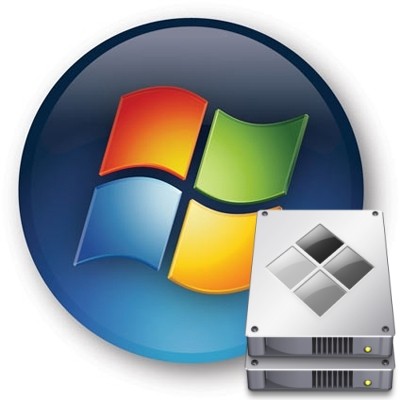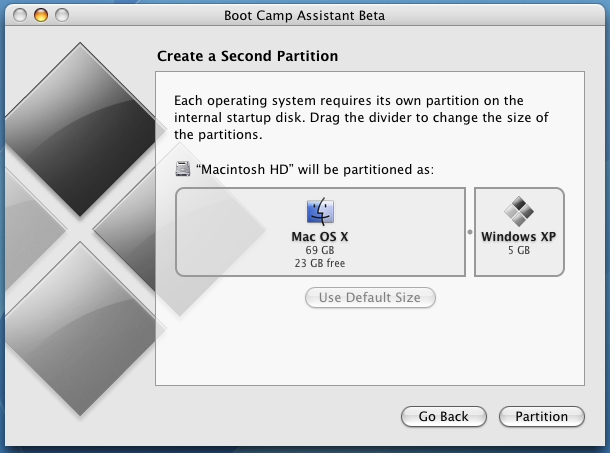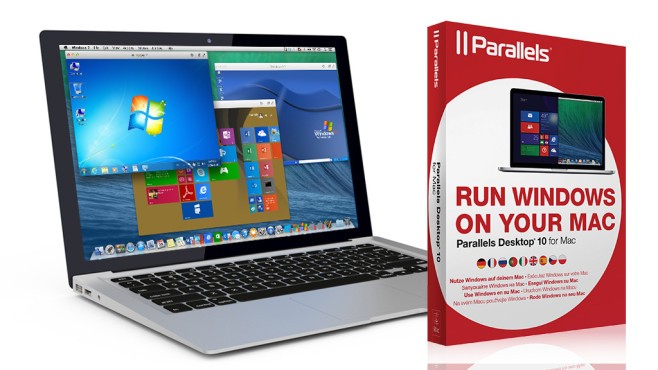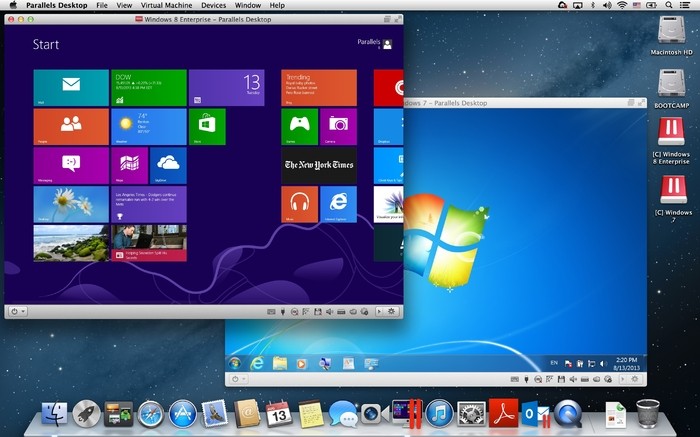
In the classic "which is better" argument between Macs and PC's, PC advocates sometimes bring up features or characteristics of the Windows operating system as an argument for PC's being better than Macs. These individuals overlook a key feature of the Mac lineup - you can run Windows on them. While you need to purchase a copy of the Windows operating system separately from your Mac, once you do you can install it and enjoy the benefits of both operating systems. This is especially useful for individuals who want to use Macs but may rely on a few programs that are Windows-specific.
Options For Installing Windows on a Mac
If you are looking to install Windows on your Mac, you have two options. You can either install Windows in Boot Camp, a native feature of the Mac OS X operating system, or you can use a virtualization program. These are third-party applications that run on your Mac just like any other program. They create a virtualization of another computer, allowing you to install a separate operating system. With virtualization software, it is almost like you are using two computers at the same time on one machine. There are many virtualization programs available, but Parallels Desktop for Mac is the most popular and will be the one we focus on. If you'd like to check out other virtualization options, VMware, Citrix and Red Hat are good alternatives.
Depending on your specific needs, you may want to chose Boot Camp for your Windows install or you may want to buy a virtualization program. They both have their own specific advantages and disadvantages when you compare them. However, before you make the decision to purchase Windows and install it on your Mac, you'll want to double check that your Mac is compatible with the Windows version you are planning to run. Use this handy reference from Apple to determine which versions of Windows your Mac is compatible with.
Once you have the appropriate version of Windows, you now need to decide whether you would like to install it with Boot Camp or Parallels.
Boot Camp

How It Works
Boot Camp is built into the OS X operating system of the Macs. If you go to your Applications > Utilities folder, you will see the Boot Camp Assistant app. Boot Camp makes a separate partition on your computer's hard drive (think of it as splitting your hard drive into two separate parts) specifically for installing and running windows. Upon launching the Boot Camp Assistant app, you have the option to change how large this partition is. Once Windows is installed in Boot Camp, every time you turn on your computer, you will be asked to select the operating system you would like to run. This means to switch from OS X to Windows, you need to reboot your Mac.

Advantages
- Built into the Mac OS X operating system
- Because Boot Camp runs Windows completely isolated from OS X instead of at the same time (like with virtualization), Boot Camp is less of a strain on your Mac's memory and is easier on your Mac to keep up and running.
- The Boot Camp Assistant app guides you through the install process
- Completely free! All you have to do is buy Windows and not any additional software
- Free and easy updates
Disadvantages
- Once you partition the hard drive, you cannot adjust the partition size. Meaning if you create a 200GB partition for Windows but run out of storage, you would need to completely reset Boot Camp and repartition to the size you desire.
- Every time you wish to switch between operating systems, you need to reboot your computer
- No easy way of transferring files and data between operating systems. Either email them to yourself, use a cloud service like Dropbox or iCloud Drive, or use an external device like a USB drive or CD.
- Because you need to partition the hard drive, you are effectively decreasing the available space on the OS X side of your Mac.
Parallels Desktop for Mac

How It Works
If you decide to use Parallels Desktop, you first need to purchase both the Parallels program and your Windows operating system. The current version of Parallels Desktop is Parallels 10. It is available here for $79.99. Once you purchase, download and install Parallels, you can open the program and install your Windows operating system within it. Much like Boot Camp, you decide how much space you want to allocate toward Windows, but unlike Boot Camp, you can easily change these storage options after installation. Parallels runs like any other app on your Mac. When it is up and running, you see an entire Windows desktop within a window on your Mac (you can obviously full screen the program as well). This makes switching back and forth between systems incredibly easy.

Advantages
- More functional than Boot Camp in the sense that you can run both operating systems at one time
- Easy file integration between systems. You can even link desktops between your Parallels program and OS X so that any documents created in one system are automatically copied and saved to the other system.
- Coherence Mode. This feature of Parallels blends the Windows and OS X environments together, giving you a common interface for both applications. This means that instead of having a whole Windows Desktop open within OS X, you can open Windows apps in Coherence Mode, and they look just as if you opened a Mac program.
- No need to create a separate partition on your hard drive for Windows that cannot be easily changed as with Boot Camp.
Disadvantages
- Compared to Boot Camp, Parallels is a greater strain on your Mac's memory and processing power since both operating systems are running at the same time. I would say that if you want to smoothly run either Windows 7, 8 or 10 on your Mac in Parallels, you should at least have 4GB of RAM on your Mac and if you like using many apps at the same time, I'd recommend having at least 8GB.
- Parallels is a more expensive option than Boot Camp since you have to buy the Parallels software.
- Updates are not as easy and affordable as Boot Camp. There is a new version of Parallels released in tandem with OS X updates every year and it usually costs $49.99 to upgrade. If you update the OS X version on your Mac, you will need the new Parallels version in order to be compatible. You do not need to reinstall Windows each time you update Parallels, however.
- Some people may find that the Parallels route has a steeper learning curve than Boot Camp as Parallels is a completely separate application with far more preferences and settings to learn (or be confused by), whereas Boot Camp is a more straightforward setup.
So, Which Should I Choose?
If you have an older computer with less than 4GB of RAM, you probably want to go with Boot Camp as you will notice decreased performance running Parallels. If you're someone who wants to keep their Windows and OS X experiences entirely separate, Boot Camp is also the best option for you. Those looking to install Windows on their Mac as affordably as possible will also want to go the Boot Camp route. If you want to run Windows and Mac apps together at the same time and be able to quickly switch back and forth between operating systems, you definitely want to go with Parallels or another virtualization software (they all do virtually the same thing, no pun intended). My personal recommendation is that if you have a computer with enough RAM and a processor to handle it, go with Parallels. I find it easier to use and the ability to run Windows apps in Coherence Mode is awesome - giving you the best of both operating system worlds.
Thanks for reading! If you have any questions about Boot Camp, Parallels, virtualization or anything else, leave us a comment below or hit us up on our web chat! If you need help installing Windows on your Mac, our Apple Technicians are able to help you out. We charge $95 for the install and can also help you with purchasing and downloading Parallels and the Windows operating system!